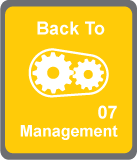“Being organised is being in control…”
It’s Monday and Jenny’s back at work. She’s been working hard all day catching up on a load of paperwork. She’s ready to go home.
A friend invites here for a drink at the pub after work. She checks her diary and has nothing else on so goes along for the one.
The penny drops…
At the pub it suddenly hits her. She had wanted to go to a new gym class this Monday!
The problem is obvious. Adding that into her diary would have helped her to remember it. Imagine if you treated all your gym workouts like you do for your work meetings. Adding them into your diary as an important, scheduled event.
They are that important after all if you want to achieve a great body. Do you add them to your diary?
Level up your life…
Plan out your weekly schedule like you would at work, but for exercise and food. Add workouts into your diary so they are just as important as business meetings. What’s more important, you and your life or your business meeting?
Adding in your workouts for 1 week ahead is ideal. Just the act of adding them as an event will help you commit to them more often.
Will power doesn’t last
Will power does not last. It’s what gets you motivated and started. Daily habits and routines are where success is found.
Will power requires effort, it’s a struggle. Your daily routine happens naturally and without too much thinking effort. Your goal is to build a daily routine that helps you achieve what you want to.
Build it in
You can build healthy habits around your daily schedule. Cycling to work, gym/walk at lunchtime are two examples.
Buddy up with someone from work and agree to cook each other a healthy lunch 3 times a week. Make it social, get other people involved. Such as lunchtime walks or a HIIT session in the park.
Habits can be good and bad. See if you can notice that unhelpful habits you currently have in your daily routine. Are they on auto-pilot?


